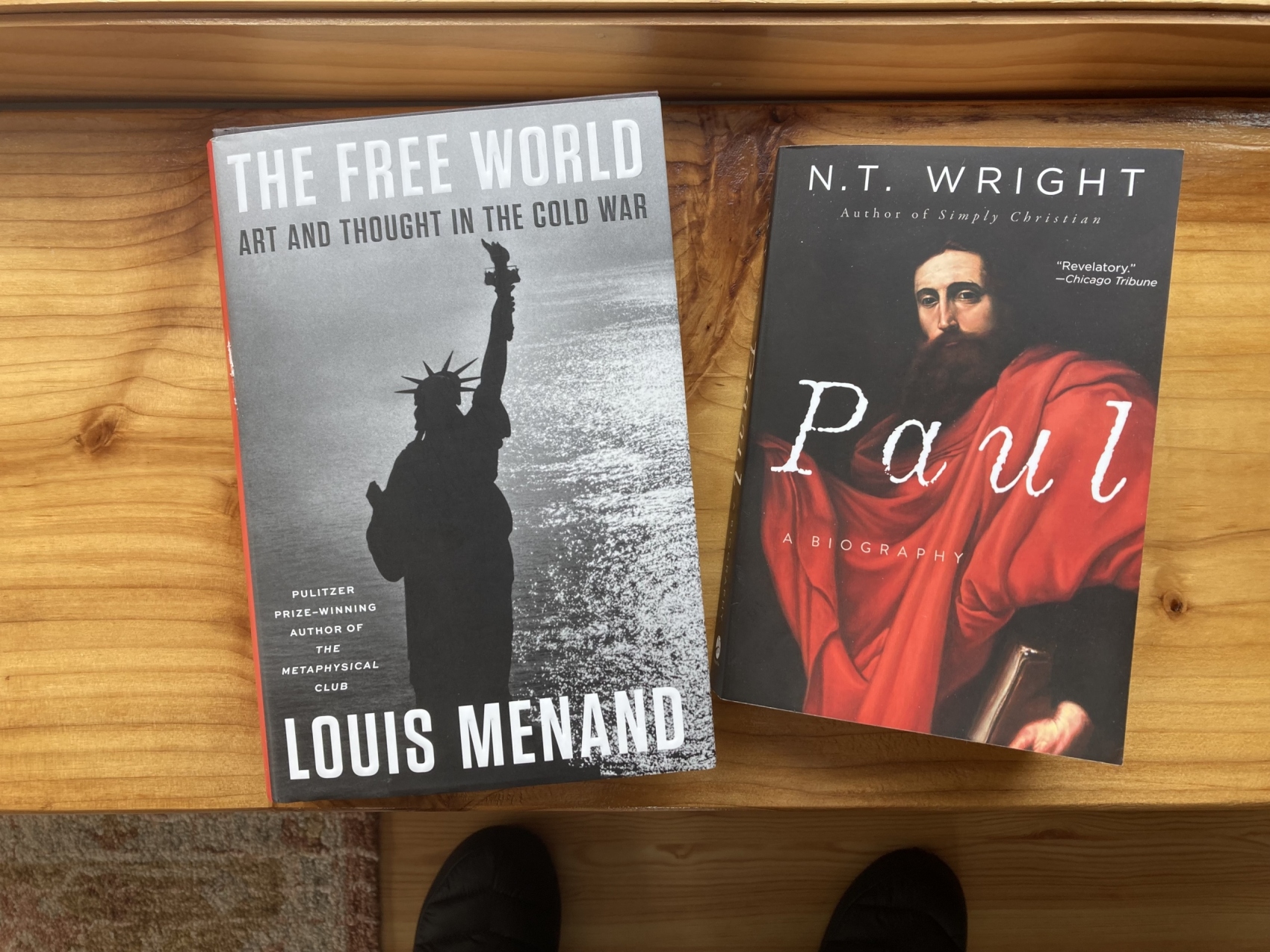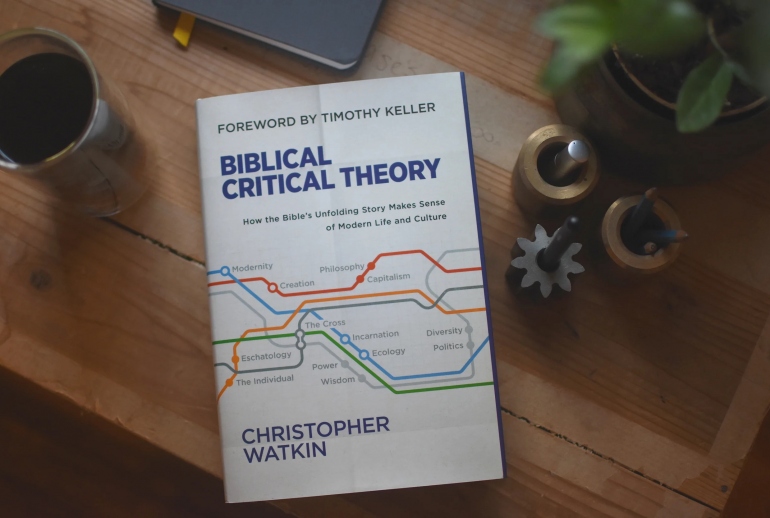Recommendation #1: The Free World: Art and Thought in the Cold War by Louis Menand (New York, NY: Farrar, Straus and Giroux; 2021) 727 pages + notes + index.
The Free World is a fascinating overview of the Cold War era (from the end of World War II to the Viet Nam war) in the United States, detailing the impact of American culture, art, and thought on the rest of the world. I was drawn to the book for two reasons. I had appreciated a few of Menand’s articles on various historical figures or events that had appeared in The New Yorker. And the period of history he covers in The Free World (1945 to the Sixties) coincided with my growing up years. I was born two years after the end of World War II and was in college when friends went to Viet Nam and didn’t return. It was also a period during which I was trying to find my way out of a Fundamentalist religion that did not engage current events in terms of faith except to search them for signs of the “End Times.” The Free World would, I hoped, provide me an opportunity to reflect on my own culture and nation.
Menand, a professor of English at Harvard and a staff writer at The New Yorker, is an engaging writer, and The Free World is well-researched. It is not written as a history of ideas, but, as he notes, as an exercise in “[i]ntellectual history,” which Menand says, “explains art and ideas by examining the conditions of their production and reception” [p. 346]. In other words, the book does not tell a single story of American culture but is a compendium of chapters as short essays, each one addressing a different person, event, or idea of interest.
I tried to take into account three dimensions: the underlying social forces—economic, geopolitical, demographic, technological—that created the conditions for the possibility of certain kinds of art and ideas; what was happening “on the street,” how X ran into Y, which led to Z; and what was going on in people’s heads, what they understood it meant to make a painting or address an injustice or interpret a poem in those years. [p. xiv]
So, Menand includes chapters on popular music and groups, scientific developments and discoveries, new ideas, values, and philosophical movements, political leaders, failures, and advances, the fine arts, the growth of consumerism, and much more.
The Free World does have one glaring omission, though Menand mentions in his Acknowledgments that his original manuscript was much longer than the published book. Still, this omission is significant: in all 700+ pages very little is said about religion in general and Christianity in specific. For example, the Black church, Black preaching, and Black theology was far more crucial to the civil rights and anti-war movements and the development of art and music than Menand seems to recognize. And Reinhold Niebuhr, a towering public intellectual during this period—he lived from 1892-1971 and was on the cover of Time celebrated as a political and moral philosopher in 1948—receives only a glancing comment. To miss the impact of religion provides an inadequate basis for understanding the development of art and culture during this crucial period of history. Besides, many ordinary believers felt their faith and lifestyles were increasingly under attack in this period, a powerful feeling of resentment that gave birth to the misguided and unbiblical culture warring that bedevils America to this day.
And then occasionally, I happened upon statements with which I profoundly disagree. (Not surprising in the book of this scope.) Here is one example, where Menand is discussing the artist Andy Warhol and the impact of his life and art. Warhol is always challenging to discuss, because perhaps more than most artists, he not only had his finger on the pulse of American culture but was prescient in where things were heading. That makes Warhol challenging, I agree, but not this challenging.
A standard way of cutting the interpretive knot is to say that Warhol was a mirror of the times. But as with any mirror, Warhol reflected back whoever was looking. In this respect, he was like Bob Dylan, another enigma of the day onto whom people projected all sorts of views. Dylan actually had nothing particularly interesting to say about American life, and neither did Warhol. [p. 517]
Excuse me? Dylan “had nothing particularly interesting to say about American life”? That is so contrary to reality it staggers the imagination. For my very different take on Bob Dylan see my review of his 2001 album “Love & Theft” online here.
This small caveat aside, The Free World is a bracing overview of the two decades from the 40s to the 60s in America, and the art, culture, persons, ideas, movements, and politics that animated that tumultuous period. Menand has the skill of an experienced researcher, unearthing details that are not well known but that lend both color and depth to whatever or whoever he is discussing. During this period the center of Western thought and culture moved from Europe to America, from Paris to New York. A great deal changed, a reality we are living with, for blessing and for curse, to this day.
Recommendation #2: Paul: A Biography by N. T. Wright (New York, NY: HarperCollins; 2018) 432 pages + chronological table + notes + indices.
N. T. Wright is a remarkable and prolific scholar, a teacher, theologian, and historian, gifted by God to the church of our day. Even when I disagree with something he says, interacting with his thought is a bracing experience and I am better for it. His expertise in early Christian thought is on display in Paul, and even if like me you were raised hearing a great deal about Paul and his epistles, I suspect you will, also like me, learn a great deal about the man you hadn’t known before. And again, like me, you’ll probably need to set aside some ideas you’ve held about Paul that Wright shows are mistaken.
Consider the remarkable facts. Paul’s letters, in a standard modern translation, occupy fewer than eighty pages. Even taken as a whole, they are shorter than almost any single one of Plato’s dialogues or Aristotle’s treatises. It is a safe bet to say that these letters, page for page, have generated more comment, more sermons and seminars, more monographs and dissertations than any other writings from the ancient world. (The gospels, taken together, are half as long again.) It is as though eight or ten small paintings by an obscure artist were to become more sought after, more studied and copied, more highly valued than all the Rembrandts and Titians and all the Monets and Van Goghs in the world.
This raises a set of questions for any historian or would-be biographer. How did it happen? What did this busy little man have that other people didn’t? What did he think he was doing, and why was he doing it? How did someone with his background and upbringing, which had produced saints and scholars but nobody at all like this, come to be speaking, traveling, and writing in this way? That is the first challenge of the present book: to get inside the mind, the understanding, the ambition (if that’s the right word) of Paul the Apostle, known earlier as Saul of Tarsus. What motivated him, in his heart of hearts?
That question leads immediately to the second one. When Saul encountered the news about Jesus, his mind was not a blank slate. He had been going full tilt in the opposite direction. More than once he reminds his readers that he had been brought up in a school of Jewish thought that adhered strictly to the ancestral traditions. As a young man, Saul of Tarsus had become a leading light in this movement, the aim of whose members was to urge their fellow Jews into more radical obedience to the ancient codes and to discourage them from any deviations by all means possible, up to and including violence. Why did all that change? What exactly happened on the road to Damascus? [p. 2]
Dr. Wright is a superb communicator and storyteller. Paul: A Biography reads like a novel, and continually enlightens, surprises, and edifies.
Photo credit: the author with his trusty iPhone.



